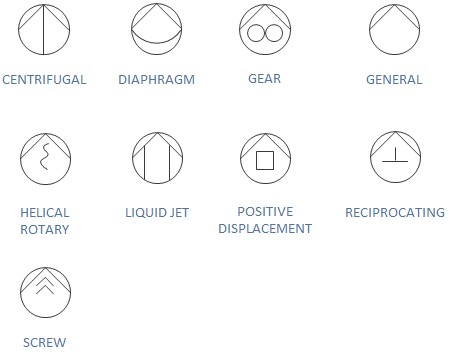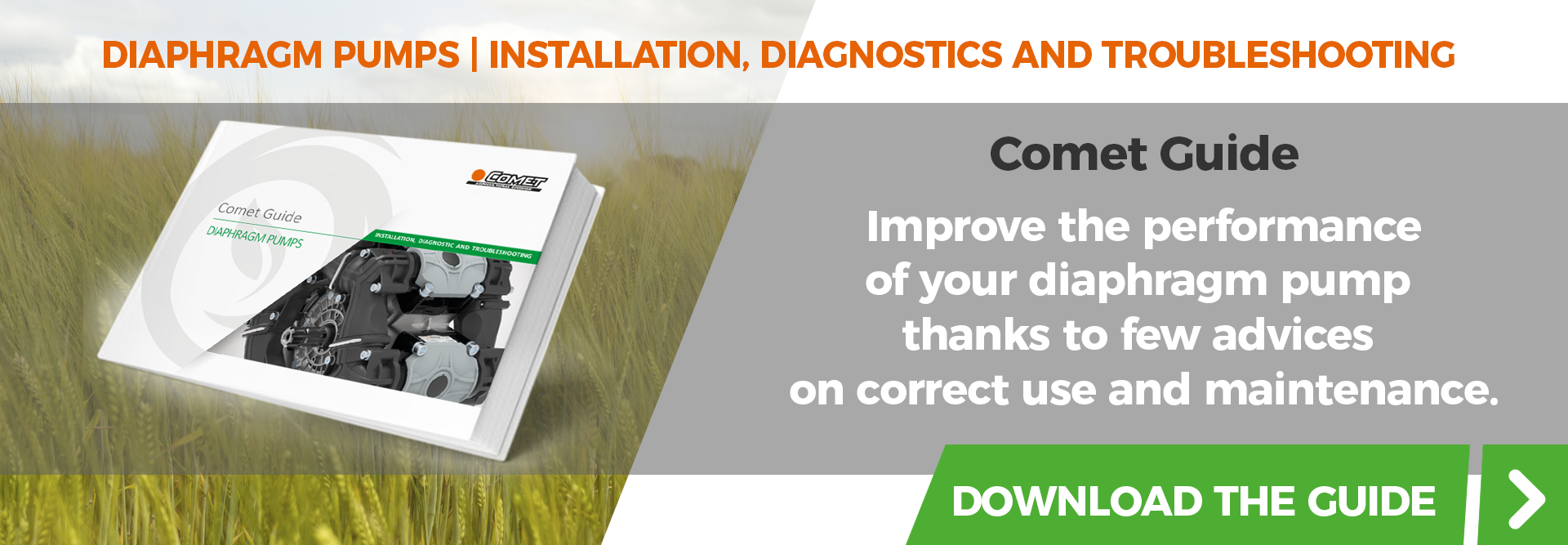Depending on the type of operation, the pumps can be divided into two macro groups:
- Positive Displacement or Volumetric Pumps
- Kinetic or fluid-dynamic pumps
PUMPING SYSTEMS
The first group of pumps includes: rotary and reciprocating pumps. The latter are divided into double-acting and single-acting reciprocating pumps, which in turn can be diaphragm or piston/plunger pumps.
The second group includes axial and centrifugal pumps.
Let's now see in detail the various characteristics of each pump
POSITIVE DISPLACEMENT OR VOLUMETRIC PUMPS
Volumetric Pumps use volume variation within a chamber to create suction and thrust of a fluid. The fluid is first sucked into the chamber, creating a vacuum therein and then expelled from the chamber, thus increasing the pressure inside it.
For example, the heart of a mammal is a volumetric pump.
Volumetric pumps move constant volumes of liquid for each operating cycle, since the chamber has a maximum defined and invariable volume.
One operating cycle corresponds to a complete rotation (360°) of the drive shaft. The volume pumped per unit of time (l/min or gpm) is independent of the fluid pressure, while it is directly proportional to the pump speed (number of rpm).
Volumetric pumps are divided into two subgroups: rotary pumps and reciprocating pumps.
ROTARY PUMPS
Rotary volumetric pumps are so called because they are driven by rotary elements. This group includes the Archimedean screw, gear pumps and peristaltic pumps.
RECIPROCATING PUMPS
Reciprocating volumetric pumps use the reciprocating rectilinear motion (sliding) of a plunger to create expansion and compression of a fluid inside the chamber.
Reciprocating pumps can be either single acting or double acting.
Reciprocating single-acting pumps
Reciprocating single-acting pumps consist of a cylinder inside which a plunger moves with reciprocating motion. The pumping chamber is connected to the suction and delivery pipes by means of two non-return valves which allow the flow only along the desired direction.
The complete operating cycle consists of two phases: the suction phase, which allows the fluid to enter, and the delivery phase, which determines the thrust of the fluid outwards.
In this type of pump, the active phase (delivery) is only one for each operating cycle.
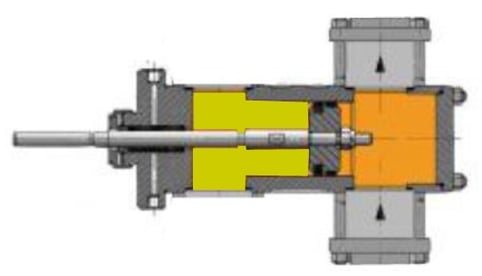
The Comet piston pumps and diaphragm pumps belong to this group.
Let's see together the characteristics of each one.
Reciprocating single-acting piston pumps
A piston pump is a reciprocating volumetric pump that compresses and expands the volume of the pumping chamber, thanks to the rectilinear motion of a piston placed inside a cylinder.
There are two types of piston pumps:
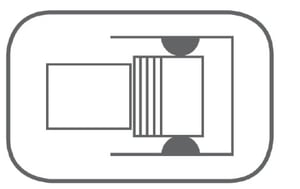
- plunger pump: the plunger is totally dipped in the liquid and the seals are on the fixed part, called liner or cylinder
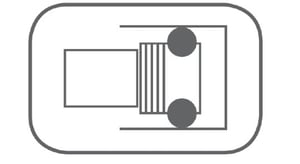 sliding piston pump: the piston comes into little contact with the liquid and the seals (in this case elastic gaskets) are applied to the surface of the piston itself.
sliding piston pump: the piston comes into little contact with the liquid and the seals (in this case elastic gaskets) are applied to the surface of the piston itself.
Reciprocating single-acting diaphragm pumps
A diaphragm pump is a reciprocating volumetric pump that compresses and expands the volume of the pumping chamber thanks to the oscillation of an elastic member, called diaphragm. It is actually a piston pump with a diaphragm placed on top of it. The diaphragm plays the role of pumping element but also acts as a seal, thus separating piston and mechanical components from the pumped liquid.

Reciprocating double-acting pumps
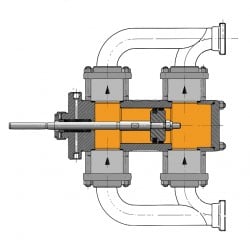
These are pumps where suction and delivery take place at the same time because the plunger works on two pumping chambers, so, while it sucks, it also conveys the fluid out of the chamber at the same time. This way, there are two active phases for each pumping cycle.
2. KINETIC PUMPS
Kinetic pumps, also known as fluid-dynamic pumps or turbopumps, are machines in which energy is transmitted to the fluid continuously through an impeller, which imparts kinetic energy (velocity) to the fluid, which energy is then transformed into pressure in an immediately subsequent phase, thus reducing velocity.
Kinetic pumps can be divided into: axial or centrifugal pumps.
AXIAL OR TURBINE KINETIC PUMPS
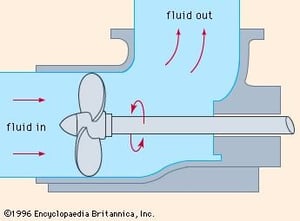
These are those pumps in which the movement of the fluid is ensured by an intubated propeller, which pushes the fluid itself like a marine propeller. They are defined axial because the movement of the flow is parallel to the axis of the impeller. These pumps are used when a high low-head flow rate is required.
CENTRIFUGAL OR RADIAL KINETIC PUMPS
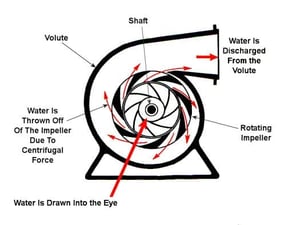
This group includes pumps consisting of a rotary member called impeller and a fixed member, or pump body.
The movement of the impeller creates a vacuum in the suction pipe (axial with respect to the impeller), so that the fluid rises to the pump body thanks to the atmospheric pressure and is then conveyed to the (radial) delivery pipe through the movement of the impeller.
STANDARD SYMBOLS FOR PUMPS IN A P&ID (PIPING AND INSTRUMENTATION DIAGRAM)
